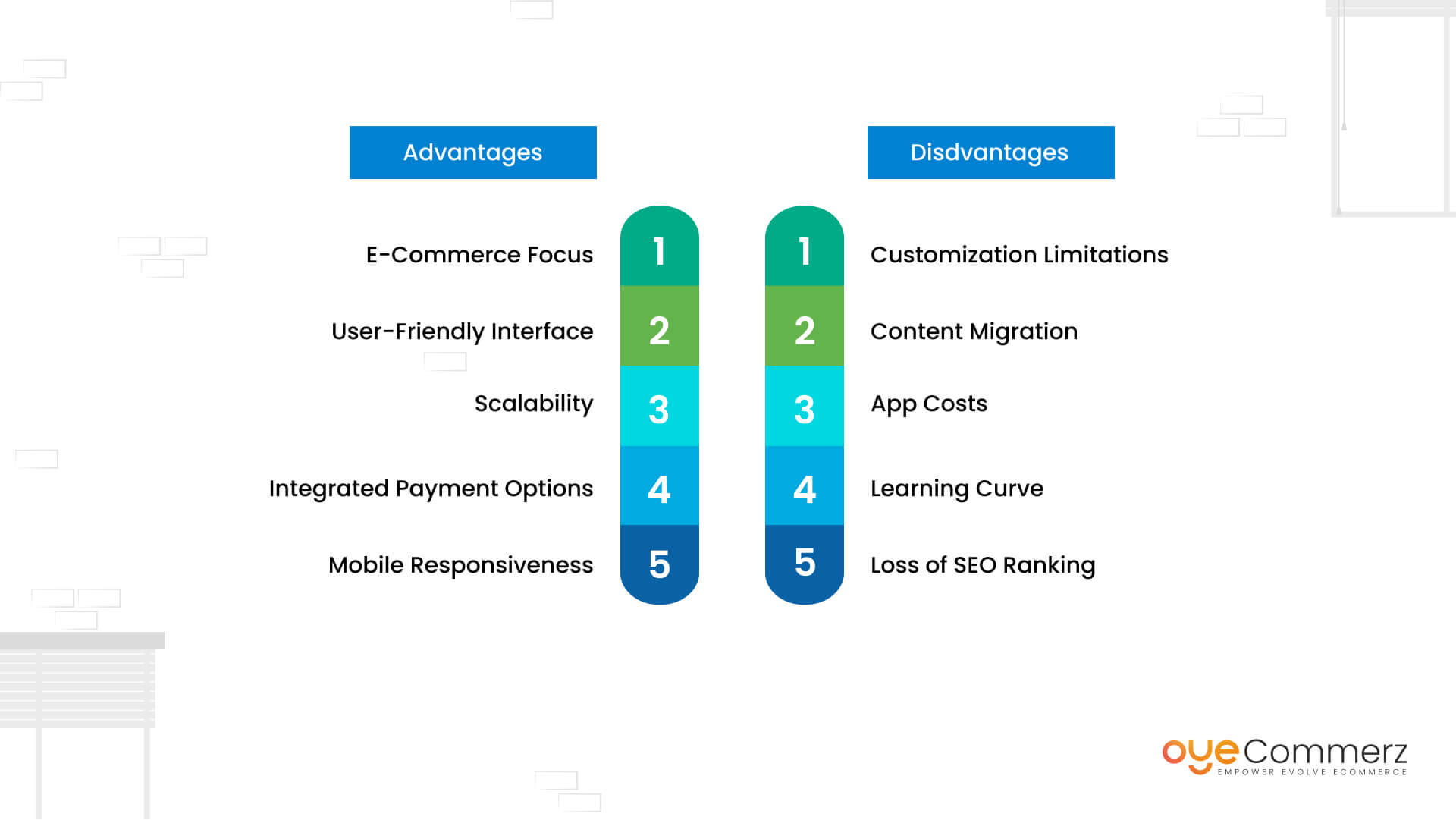Transitioning from WP to Shopify is an exciting step in optimizing your online store processes. As companies expand, choosing a solution that supports scalability, UX, and flexibility becomes crucial. Shopify is widely recognized as a favorite for e-commerce professionals, offering superior flexibility, data protection, and ease of use. In this guide, we’ll explore the transformative impact of this migration, discuss the advantages, and provide actionable steps to ensure a seamless transition.
1. Top Reasons to Transition from WP to Shopify
The combination of WordPress and WooCommerce, has served countless online stores. Nevertheless, as companies expand, challenges like plugin dependency, data risks, and technical complexities often obstruct progress. Shopify, designed explicitly for digital retail, addresses these concerns with an all-in-one, user-friendly solution. Statistics supports this shift—Shopify powers over 4.4 million stores globally, with a documented 10% increase in sales conversion rates for many businesses after migration.
2. Key Benefits of Shopify for E-commerce Success
Shopify’s robust ecosystem is tailored for expanding brands. Its notable benefits include:
- Effortless Design Flexibility: Shopify offers over 80 professionally designed themes.
- Built-in Features: Capabilities such as Shopify Payments and integrated SEO streamline operations.
- Global Reach: Currency versatility and localization features enable businesses to expand internationally.
Additionally, Shopify delivers an uptime rate of 99.98%, ensuring your store remains accessible.
3. Getting Ready for Your WP-to-Shopify Transition
Prior to starting the migration process, assess your current store. Analyze product data, customer details, and SEO performance. Resources such as Shopify’s Migration Kit or third-party solutions help ease the transition. Develop a comprehensive plan, ensuring all resources—product descriptions, images, and articles—are ready for seamless import.
4. Data Migration: A Critical Step
Transferring your data is a cornerstone of a successful platform switch. When migrating from WP to Shopify, prioritize:
- Product Information: SKU, item summaries, and categories.
- Client Information: Emails, order history, and preferences.
- Search Engine Considerations: Preserve meta tags, URLs, and redirects to maintain search rankings.
Leverage apps like LitExtension to facilitate seamless migration while reducing mistakes.
5. Customizing Your Shopify Store
Post-migration, customizing your Shopify store ensures it aligns with your brand. Utilize Shopify’s drag-and-drop editor to create layouts with ease. Shopify's themes are mobile-responsive, providing a smooth UX across devices—a Shopify vs WooCommerce pros and cons key point, Shopify post-migration support given 74% of e-commerce traffic comes from mobile visitors.
6. How to Protect Your SEO Rankings When Switching Platforms
SEO is vital for maintaining your visibility during migration. Shopify excels in SEO with organized link formatting, preloaded features, and seamless blog integration. Ensure:
- Implement 301 redirects for old URLs.
- Enhance updated content with keyword-rich content.
- Use Shopify's apps Plug in SEO to monitor performance after the switch.
7. Essential Tests After Migrating to Shopify
Once the migration is complete, conduct thorough testing.
Review: - Page load times (Shopify delivers faster speeds compared to WP).
- Payment integration reliability and transaction flow.
- Mobile responsiveness.
Quality assurance ensures your store delivers a smooth shopping journey from day one.
8. Real-Life Success Story
One such migration success story is Gymshark, a fitness apparel brand that moved to Shopify. After the switch, the company saw a 60% increase in mobile sales and reduced site downtime. This showcases the capabilities of Shopify in driving e-commerce growth.
9. Overcoming Common Migration Issues
Migration comes with challenges, such as information accuracy and reconfiguring custom functionalities. However, Shopify’s robust support and external professionals simplify the process. Collaborating with qualified Shopify developers helps guarantee a trouble-free transition.
10. Starting Your Journey with Shopify
Migrating from WP to Shopify represents a strategic decision to e-commerce. By focusing on growth, streamlining operations, and improving buyer satisfaction, Shopify empowers businesses to succeed in challenging industries.
Final Thoughts
Switching from WordPress to Shopify is a strategic move that can greatly enhance your e-commerce success. With a well-structured strategy, the right tools, and professional guidance, you can achieve new growth opportunities.
Excited to start the journey? Reach out today to learn how our Shopify migration services can revolutionize your e-commerce platform. Contact us now, or ask yourself: Is it time to seize Shopify’s advantages for your store?
